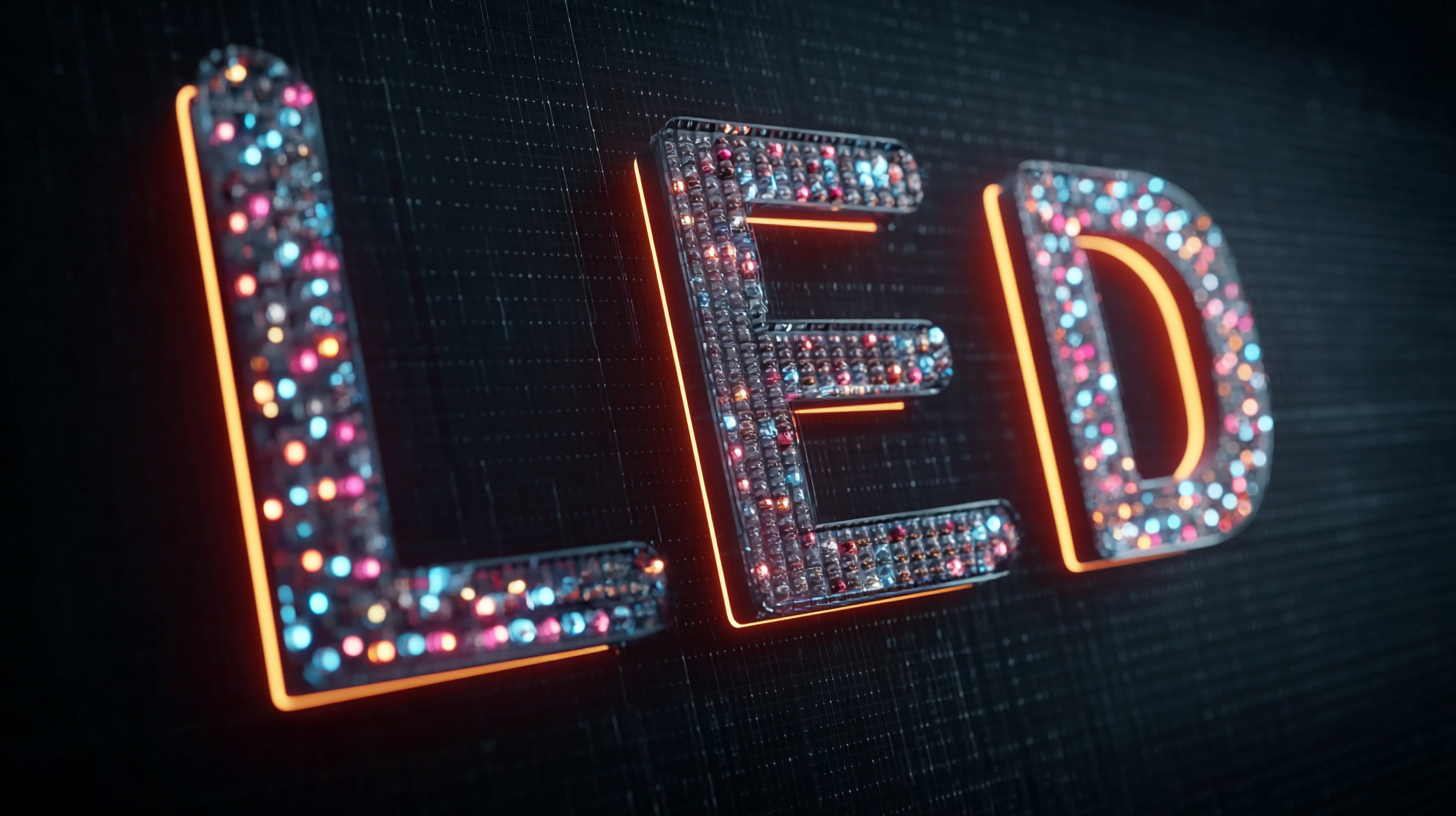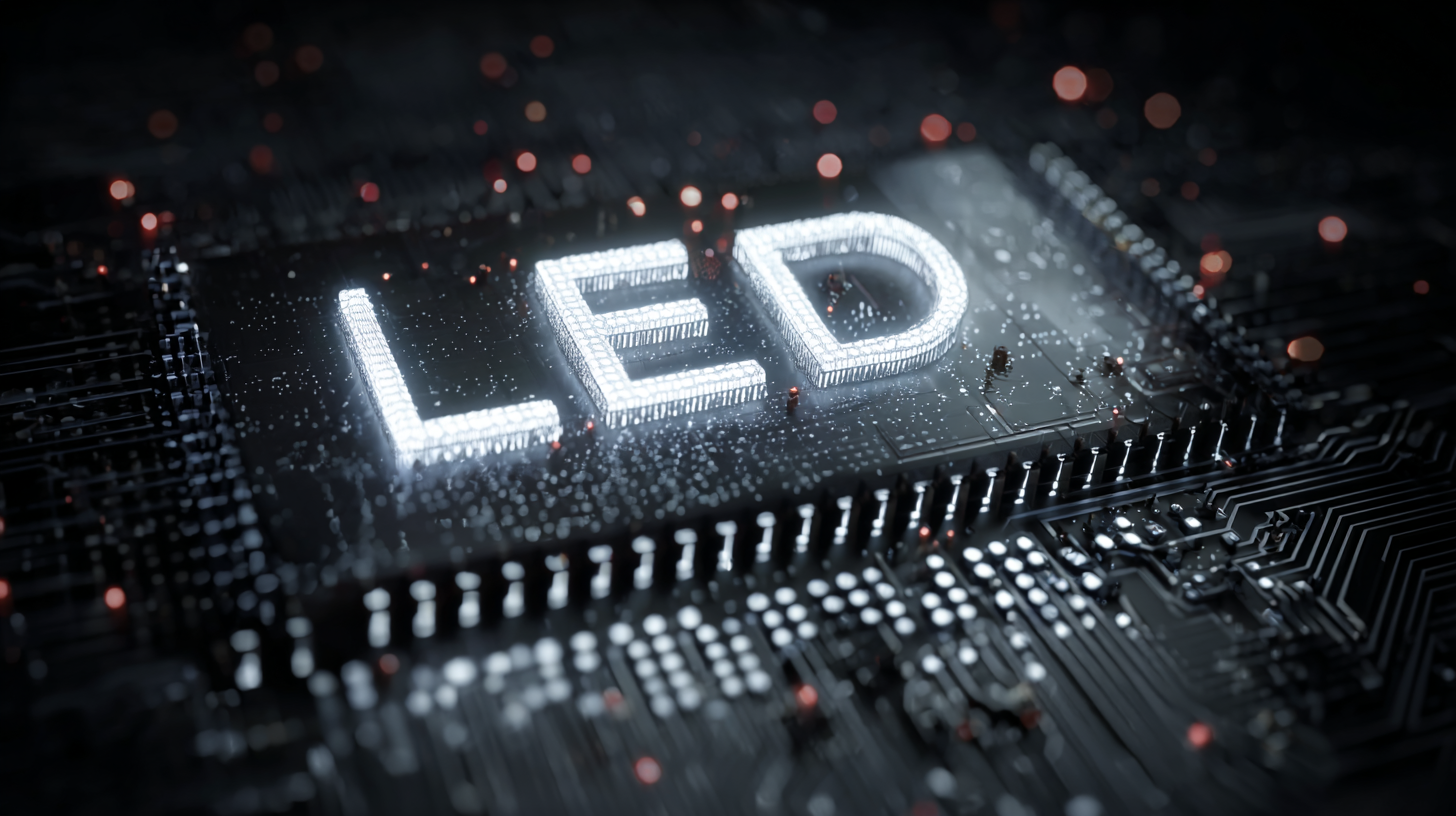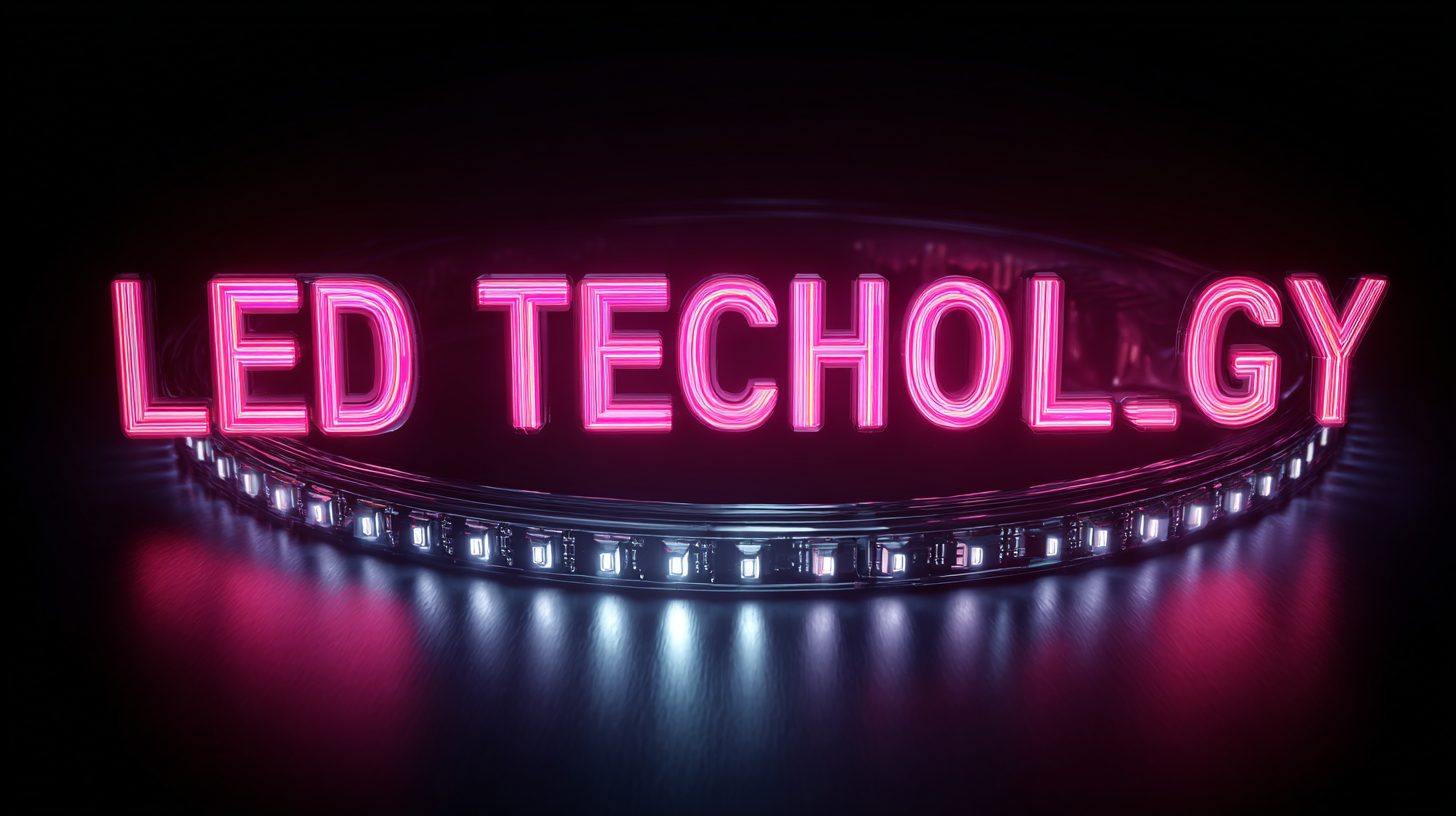
Embracing the Future of Best Led Technology in 2025 Innovations and Practical Applications
As we move towards 2025, the landscape of LED technology continues to evolve at an unprecedented pace, underscoring its significance in various industries. According to a recent report from ResearchAndMarkets, the global LED market is projected to reach $136.5 billion by 2025, driven by innovations in energy efficiency and smart lighting solutions. This remarkable growth is a testament to the relentless pursuit of advancements in LED technology, enabling practical applications that range from residential lighting to extensive commercial infrastructures.
 Notably, the reliability and quality associated with "globally trusted Chinese manufacturing" play a crucial role in meeting the global demand for high-performance lighting solutions. By embracing these cutting-edge innovations, industries can effectively enhance their operational efficiencies and contribute to a more sustainable future.
Notably, the reliability and quality associated with "globally trusted Chinese manufacturing" play a crucial role in meeting the global demand for high-performance lighting solutions. By embracing these cutting-edge innovations, industries can effectively enhance their operational efficiencies and contribute to a more sustainable future.
The Evolution of LED Technology: Trends and Predictions for 2025
The evolution of LED technology is poised for remarkable advancements by 2025, driven by continuously shifting consumer demands and innovative research. According to a report from MarketsandMarkets, the global LED market is expected to reach $98 billion by 2025, growing at a CAGR of 13.9%. This growth is largely attributed to the increasing emphasis on energy efficiency and the shift towards smart lighting solutions, which are anticipated to dominate the landscape. The integration of IoT in LED technology, enabling remote monitoring and automated control, will significantly enhance energy management for both residential and commercial use.
Moreover, the environmental sustainability of LEDs is becoming a primary focus, as manufacturers pivot toward eco-friendly materials and production processes. A report by Grand View Research indicates that the adoption of energy-efficient LED lights can reduce greenhouse gas emissions by up to 80% compared to traditional lighting solutions. As we move into 2025, these advancements not only promise to deliver superior illumination and longer lifespans but also align with global sustainability goals, ultimately reshaping how we perceive light in our environment.
Key Innovations in LED Lighting: What to Expect in the Coming Years
As we approach 2025, the LED lighting industry is set to witness groundbreaking innovations that will redefine how we illuminate our spaces. One of the most significant advancements includes the integration of smart technology into LED systems. By incorporating IoT capabilities, LEDs can now communicate with other devices, allowing for enhanced control and energy efficiency. Imagine being able to adjust lighting settings remotely or have lights automatically adjust based on the time of day or occupancy. This shift towards smart lighting not only adds convenience but also optimizes energy consumption, leading to significant cost savings.
Another key innovation on the horizon is the development of organic LEDs (OLEDs). Known for their flexibility and ability to produce vibrant colors, OLEDs are poised to transform interior design by enabling architects and designers to explore new avenues of creativity. These ultra-thin panels can be incorporated into walls, ceilings, or even furniture, providing seamless lighting solutions that blend aesthetics with functionality. As OLED technology advances, we can expect to see more customizable and eco-friendly lighting options that cater to diverse consumer preferences while promoting sustainability in building practices. Enhanced lifespan and reduced environmental impact are just a few of the benefits consumers will enjoy as these technologies continue to evolve.
Key Innovations in LED Lighting: What to Expect in the Coming Years
Practical Applications of LED Technology Across Various Industries
The emergence of LED technology has dramatically transformed various industries, ushering in a new era of energy efficiency and sustainability. In 2023, the global LED market was valued at approximately $75 billion and is projected to reach $150 billion by 2025, according to a report by Allied Market Research. This exponential growth is largely driven by the increasing adoption of LED lighting in commercial and residential applications, where the energy savings can reach up to 80% compared to traditional incandescent bulbs.

In the realm of agriculture, LED technology is proving revolutionary, particularly in controlled environment agriculture (CEA). A report from the American Society of Agricultural and Biological Engineers highlights that using LED grow lights can enhance crop yields by as much as 30% while reducing energy consumption by 50%. This application not only improves food production but also aligns with sustainability goals, a critical factor as the world faces increasing pressure to feed its growing population.
Furthermore, the automotive industry is harnessing the benefits of LED technology. According to Grand View Research, the global automotive LED market is expected to reach $39 billion by 2025. The integration of LED lighting in vehicles enhances not only aesthetics but also safety, improving visibility for drivers and reducing energy loads on the vehicle's power supply. As these advancements proliferate, the practical applications of LED technology will continue to reshape industry standards across the board.
Navigating Import and Export Certifications for LED Products
As the LED technology landscape evolves, understanding import and export certifications for LED products becomes crucial for businesses aiming to thrive in 2025 and beyond. According to a report by MarketsandMarkets, the global LED lighting market is expected to reach $140.37 billion by 2025, predominantly driven by advancements in technology and increased regulatory mandates. This growth underscores the importance of complying with international standards and certifications, which ensure quality, safety, and environmental sustainability in LED products.
Navigating the complexities of these certifications can be daunting. Entities like the International Electrotechnical Commission (IEC) and Underwriters Laboratories (UL) play pivotal roles in establishing benchmarks for LED products. Compliance with these standards not only facilitates smoother cross-border transactions but also enhances product credibility among consumers. The Global Trade and Development Network noted that approximately 75% of companies reported faced delays in international trade due to certification issues in 2021, emphasizing the need for robust systems to manage compliance effectively. With the expected surge in LED product demand, businesses must prioritize mastering these certification requirements to unlock new market opportunities and maintain a competitive edge.
Best Practices for Integrating LED Technology into Your Business Strategy
As we move towards 2025, the integration of LED technology into business strategies has never been more critical. The advent of Industry 5.0 emphasizes the necessity for sustainable practices that leverage technological advancements. Businesses must adopt best practices for integrating LED solutions, focusing not only on energy efficiency but also on enhancing customer experiences and operational effectiveness. By aligning LED technology with overall business objectives, companies can foster innovation while supporting sustainability initiatives.

Incorporating LED technology effectively requires a multifaceted approach that includes training employees and embracing a culture of digital transformation. Businesses can benefit from a common language that bridges the gap between technology and operational goals. This alignment ensures that teams from various departments work collaboratively, maximizing the benefits of LED innovations. As organizations navigate this transformative landscape, adopting advanced strategies for technology integration will be key to maintaining competitiveness and driving sustainability growth.
